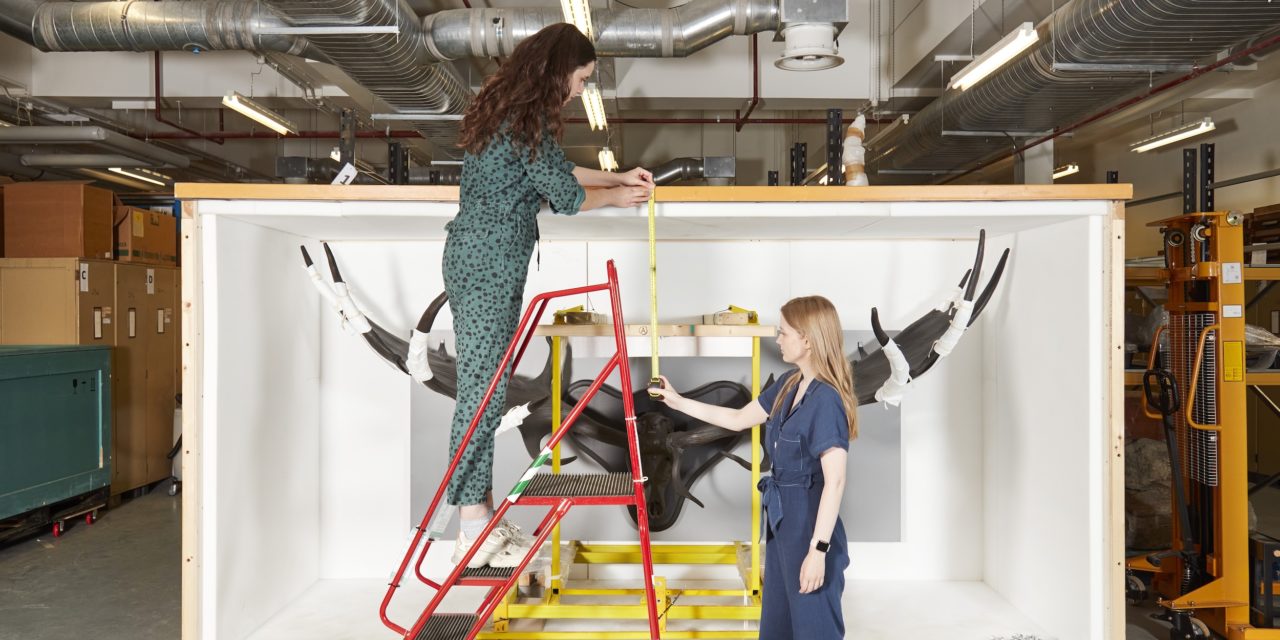The Natural History Museum (NHM) is to open a major research centre on land at Thames Valley Science Park (TVSP).
Funded by the Department for Digital, Culture, Media & Sport as part of a UK Government-wide priority to increase investment in R&D, the centre, described as being the size of three football pitches, will be sustainably built as a best-in-class low-carbon design.
In collaboration with the University of Reading, the state-of-the-art building will house collections, storage and conservation facilities, digitisation and imaging suites, molecular laboratories, facilities for cryotherapy, clusters of high-performance computing and collaborative spaces for the museum’s research and visiting scientists.
In total, there will be 27 million specimens and 5,500 metres of library material. It is the biggest move of its collections since the 1880s.
A planning application is expected to be submitted this year with completion in 2026.
TVSP already houses a significant base for many of the British Museum’s collections in another collaboration with the University of Reading.
Vice-Chancellor Prof Robert Van de Noort said: “This is an exciting development for the University of Reading. It could provide significant opportunities for our academics and students, as well as bringing benefits to the broader local area.
“The University already has a working relationship with the British Museum, which also has a facility located at the Thames Valley Science Park, as well as several other national and international organisations. This new relationship with the Natural History Museum should further enhance the international research success of both organisations.
“We look forward to working closely with the Natural History Museum and our local community on the proposed development.”
Arts Minister Lord Parkinson said: “The Government is investing tens of millions in this fantastic project to protect the Natural History Museum collection for future generations and to help academics and researchers tackle major challenges such as climate change, food security and biodiversity conservation.
“The partnership between the museum and the University of Reading will also see the UK blaze a trail worldwide through the rapid digitisation of collections in cutting-edge science facilities – securing our position as a leader in research and collaboration.”
The new centre will not house any of the collections currently on display at the NHM’s existing site in South Kensington but the move will allow it to use gallery spaces there, not currently accessible to the public because collections are housed in them.
In recent years the university, already a leading centre for the study of the environment, science, business and the arts, with a global reputation for research on climate and food, has introduced the Rutherford Cancer Centre, Shinfield Studios, and Oxford Quantum Circuits as well as the British Museum.
In addition, the proximity to Oxford University, Harwell, UK Centre for Ecology and Hydrology and the European Centre for Medium Range Weather Forecasts, has made made the TVSP site increasingly well-located for the scientific collaborations.
Image (credited to Trustees of the Natural History Museum): Shows staff measuring a megaloceros specimen.
© Thames Tap (powered by ukpropertyforums.com).
Sign up to receive your free weekly Thames Tap journal here.















